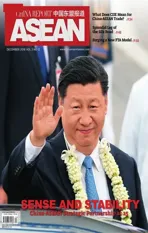15 KEY PHRASES FOR 15 YEARS OF CHINA-ASEAN STRATEGIC PARTNERSHIP
2018-12-25
BIMP-EAGA
The Brunei Darussalam-Indonesia-Malaysia-Philippines East ASEAN Growth Area(BIMP-EAGA) is playing a growing role in promoting China-ASEAN cooperation.It was launched in 1994 as an initiative for sub-regional economic cooperation inside ASEAN, aiming to accelerate economic development in areas that are geographically distant from their national capitals, yet in strategic proximity to each other, by synergizing resources and markets.China became a development partner of BIMP-EAGA in 2005 and has maintained friendly relations with the organization ever since, especially in infrastructure building for agriculture, energy and fishery.

China-ASEAN Expo
The China-ASEAN Expo, aiming to boost friendly cooperation among participating parties, was launched in 2004 in Nanning in south China’s Guangxi Zhuang Autonomous Region. Keeping with the times,the expo has expanded into an effective platform for China-ASEAN trade and investment cooperation,contributing to the Belt and Road Initiative.Over the past 15 years, the expo has added a wide range of exhibitions covering agriculture, light industry,culture and tourism, forestry and other sectors. Beginning in 2015,the expo has included overseas tours in Thailand, Vietnam,Indonesia, Brunei and Myanmar among other ASEAN states.
Pan-Beibu Gulf Economic Cooperation
The Pan-Beibu Gulf Economic Cooperation was launched in 2006 as a sub-regional mechanism involving China’s Guangxi Zhuang Autonomous Region and the six ASEAN countries of Vietnam,Malaysia, Singapore, Indonesia, the Philippines and Brunei. With focus on supporting the 21st Century Maritime Silk Road, enhancing the China-ASEAN network for ports cooperation and building a new rail-sea trade corridor, the mechanism has held 10 fruitful forums.
Highest Priority on China’s Foreign Affairs Agenda
Chinese Foreign Minister Wang Yi said China-ASEAN cooperation has become the most successful and dynamic work in the Asia-Pacific region at a press conference attended by Chinese and foreign reporters this March.“In the year ahead, we will continue to place the highest priority on cooperation with ASEAN, upgrade our strategic partnership and build a more close-knit community of shared future,”he pledged.
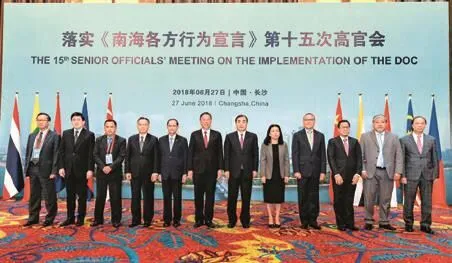
COC in the South China Sea
China and ASEAN signed the Declaration on the Conduct of Parties in the South China Sea in 2002 to ensure peace and stability in South China Sea. As the precursor of the Code of Conduct(COC) in the region, the document was followed by negotiations on the COC with the purpose of building a mechanism of equal participation, independent of external interference. The involved parties arrived at a single draft negotiating text this August and are expected to finish talks in three years.
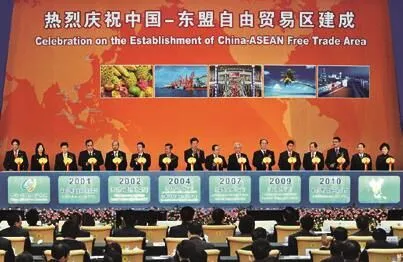
CAFTA
China-ASEAN Free Trade Area(CAFTA) will celebrate its 10th anniversary on January 1, 2020.From the implementation of the Early Harvest Program in 2004 to the launch of the CAFTA followed by the upgraded CAFTA with an aim to expand trade to US$1 trillion by 2020,the CAFTA has enjoyed some extraordinary years. Driven by it, China-ASEAN trade reached US$514.8 billion, and two-way investment totaled US$200 billion in 2017. China has remained the largest trading partner of ASEAN for nine consecutive years, while ASEAN has been China’s third largest trading partner for seven years in a row.
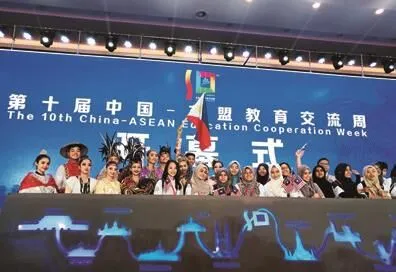
China-ASEAN Education Cooperation Week
This annual event was jointly launched in 2008 by China’s Ministry of Foreign Affairs,the Ministry of Education and Guizhou Province. From a platform for education cooperation and exchange,it has expanded to cover cultural and people-to-people exchanges beyond ASEAN states with involvement from the rest of the world.In 2017, China pledged to provide ASEAN countries with no less than 20,000 government scholarships by 2020 to further education cooperation.
Community of Shared Future
When addressing Indonesian lawmakers in October 2013, Chinese President Xi Jinping remarked that China is willing to work together with Indonesia and other ASEAN countries to be good neighbors, friends and partners, and jointly build a closer China-ASEAN community of shared future.The year 2013 marked the 10th anniversary of the China-ASEAN strategic partnership.Xi's two-day visit to Indonesia was the first leg of his maiden trip to Southeast Asia after he assumed presidency in March of that year.
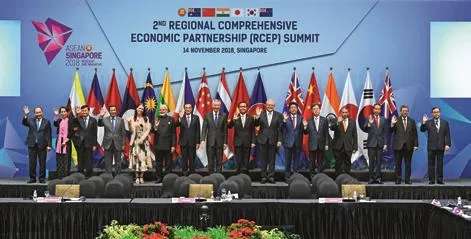
RCEP
Defending free trade is a tough but crucial task amid rising protectionism. As a supporter of free trade, ASEAN first proposed the Regional Comprehensive Economic Partnership (RCEP) to bolster regional cooperation in the Asia-Pacific region. Negotiations among the 10 member states of ASEAN as well as China, Japan,South Korea, India, Australia and New Zealand are expected to conclude by the end of this year.The region hosts half of the world’s population and produces a third of the world’s total economy.
21st Century Maritime Silk Road
During his state visit to Indonesia in 2013, President Xi proposed to consolidate efforts with countries in Southeast Asia to build a new “Maritime Silk Road.” The project aims to boost China-ASEAN maritime cooperation and forge closer ties in a community with a shared future. Starting with the launch of individual projects expected to spur a wider range of cooperative activities, it envisions a network of interconnected markets linking ASEAN, South Asia, West Asia, North Africa and Europe, and a strategic partnership for the South China Sea and the Pacific and Indian oceans.Along with the Silk Road Economic Belt, the proposal later developed into the current Belt and Road Initiative which highlights policy,infrastructure, trade, financial, and people-topeople connectivity. All 10 member states of ASEAN are founding members of the Asian Infrastructure Investment Bank, which aims to support the Belt and Road Initiative.

Southern Transport Corridor
The faster Southern Transport Corridor is an important part of the China-Singapore (Chongqing)Demonstrative Initiative on Strategic Connectivity, the third intergovernmental cooperation project between China and Singapore. As a new international land-sea trade corridor, the link aims to connect Chongqing and Qingzhou in Guangxi Zhuang Autonomous Region by rail,and Qingzhou to Singapore and beyond by sea, connecting western China to Southeast Asia and the rest of the world.

Largest Source of Inbound Tourists
Statistics show that with 130 million people traveling abroad in 2017, China maintained its position as the largest source of international outbound tourism.Boasting a bounty of tourism resources and affordable tour packages, many Southeast Asian countries are among the top 10 overseas destinations for Chinese travelers. China has already become the largest source of inbound tourists for Thailand, Vietnam, Cambodia and Indonesia.
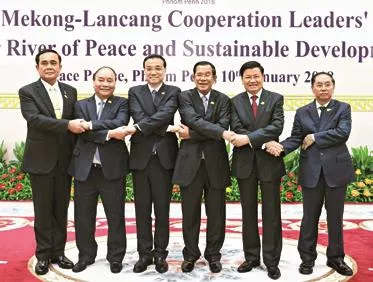
LMC
A new type of sub-regional cooperation mechanism, the Lancang-Mekong Cooperation(LMC) was formulated by China alongside founding members of Cambodia, Laos, Myanmar, Thailand and Vietnam in March 2016. Early on, LMC framework was structured around three pillars of cooperation:politics and security, economics and sustainable development, as well as society, culture and people-topeople exchanges. As partnerships have advanced, the mechanism has identified five priorities for cooperation in sectors of connectivity,production capacity, cross-border trading, water resources, and agriculture and poverty alleviation.It will also cover partnerships in urbanization, digital revolution and youth exchanges among others.
3+X Cooperation Framework
Chinese Premier Li Keqiang called on ASEAN countries to work with China to formulate a China-ASEAN Strategic Partnership Vision 2030 when addressing the 20th China-ASEAN Summit in November 2017.He suggested upgrading the previous“2+7” cooperation framework into a“3+X” framework.The new framework is underpinned by the three pillars of political and security cooperation, economic cooperation and people-to-people exchanges and supported by cooperation in multiple sectors. The expansion helped China-ASEAN cooperation better define its priorities and find new vitality through partnerships in emerging sectors.
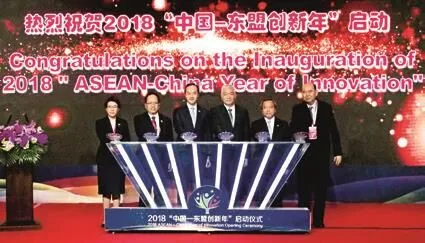
China-ASEAN Year of Innovation
The China-ASEAN Year of Innovation was launched on April 12, 2018, in Beijing. China declared it is ready to align with ASEAN states in terms of innovation-driven development strategies and further cooperation in science and technology with ASEAN partners. A host of events such as the Forum on China-ASEAN Technology Transfer and Collaborative Innovation and China-ASEAN Youth Innovation Contest have been held in 2018. China has pledged to support 500 young scientists from ASEAN states to conduct short-term research programs in China,offer training programs for 1,200 professionals in science, technology and management, and build 10 joint laboratories with ASEAN countries over the next five years.
